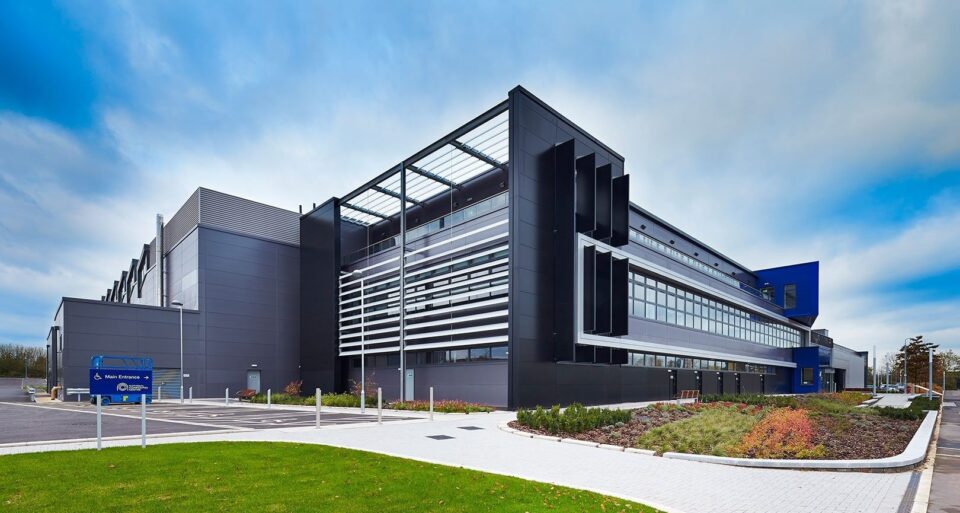Isambard‑AI



Here are the full details about the UK’s most powerful supercomputer, Isambard-AI, switched on in Bristol:
What and where
- The machine is hosted by University of Bristol at the Bristol Centre for Supercomputing (BriCS) facility, located at the National Composites Centre (NCC) in the Bristol & Bath Science Park. (University of Bristol)
- It was officially switched on around 17 July 2025. (NVIDIA Blog)
Key specifications
- Designed specifically for AI and high-performance computing (HPC). (arXiv)
- Uses approx. 5,448 NVIDIA GH200 Grace Hopper “Superchips” (i.e., combined CPU + GPU modules) in its main build. (NVIDIA Blog)
- Delivers about 21 exaFLOPS of AI performance (i.e., 21 quintillion floating-point operations per second for AI workloads) in its first phase. (NVIDIA Blog)
- Housed in a modular “low-carbon” data-centre facility, built in under a year from car-park to full facility. (University of Bristol)
- It stands among the most energy-efficient supercomputers globally: ranked 4th globally on the Green500 for energy efficiency. (Data Center Dynamics)
Why it matters: use-cases & national strategy
- It gives the UK a step-change in compute capacity: officials say it’s more powerful than all other UK supercomputers combined. (TechRadar)
- The ambitions include:
- AI-driven drug discovery and healthcare research. (University of Bristol)
- Advanced climate modelling and clean-energy innovation. (University of Bristol)
- Large language models (LLMs) and AI safety research. (University of Bristol)
- The UK government invested £225 million in the build. (TechRadar)
- The machine is part of the national strategy to enhance “sovereign compute capacity” so the UK isn’t left behind in the global AI race. (University of Bristol)
Additional context & notable points
- According to the University of Bristol, the machine can accomplish in one second what would take the entire global population 80 years if each person did one calculation per second. (University of Bristol)
- The facility uses direct liquid-cooling technology (fan-less cabinets) and hybrid cooling towers to reduce energy/water usage. (Data Center Dynamics)
- In global rankings: it sits around 11th in the world on the TOP500 list of fastest supercomputers. (TechRadar)
Implications for the UK & beyond
- For UK science: This means UK researchers and industry now have access to compute power previously only available in large international labs.
- For industry: Tools for UK businesses to leverage AI at scale (e.g., manufacturing, materials science) are now closer to home.
- For geopolitics/sovereignty: By investing in domestic compute, the UK reduces dependency on foreign cloud/AI infrastructure for key national tasks.
- For environment: Having a high-efficiency supercomputer helps manage the huge energy demand of AI workloads more sustainably.
- For the region: It boosts the Bristol/Bath region’s status in tech infrastructure.
- Here are some selected case studies and comments around Isambard‑AI — the UK’s new flagship supercomputer in Bristol — showing how it’s being used, and what stakeholders are saying.
Case studies
1. Medical imaging & disease-detection
- Researchers at University of Bristol & partners are using Isambard-AI to analyse MRI scans, enabling earlier detection of cancers and personalised treatment plans. (University of Bristol)
- A project monitors dairy cattle herds (in Somerset) to detect early behavioural changes indicative of mastitis — using AI trained on social behaviour, enabled by Isambard-AI’s computing muscle. (The Guardian)
- Another study is assessing skin-cancer detection apps and identifying bias (especially for darker skin tones) by using Isambard-AI to do large-scale compute across many image data sets. (The Guardian)
2. Video understanding / wearable cameras and elder care
- Because Isambard-AI can handle enormous video‐streams and data volumes, one project uses footage from wearable cameras (e.g., capturing daily behaviour of people early in dementia) to train models that might help trigger memory cues or assist tasks at home. (University of Bristol)
3. Climate / materials / energy research
- The machine is designed not only for “pure” AI but for research into clean energy, new materials, robotics, large language models and so forth. The University of Bristol describes this as helping the UK become “a technological superpower.” (University of Bristol)
- According to a case-study summary: the facility was built modularly, reducing build-emissions by ~72% compared to traditional data-centres. (University of Bristol)
4. Research & access uptake
- As of early 2025, nearly 60 projects have already used around 100,000 GPU hours on Isambard-AI. (University of Bristol)
- Over 80 research/SME teams already applied for access shortly after launch. (University of Bristol)
Comments & stakeholder perspectives
- Simon McIntosh‑Smith (Director, University of Bristol’s supercomputing centre) said:
“Isambard-AI places Bristol at the centre of the AI revolution… spearheading AI innovation and scientific discovery in important areas such as drug discovery and climate research.” (University of Bristol)
- Peter Kyle (UK Secretary of State for Science, Innovation & Technology) commented:
“Today we put the most powerful computer system in the country into the hands of British researchers and entrepreneurs… raw computational horsepower that will save lives, create jobs, and help us reach net-zero ambitions faster.” (University of Bristol)
- NVIDIA (via their VP) described it as a “vital national asset… a step toward establishing sovereign AI capabilities.” (University of Bristol)
- On the flip side, some commentary expresses caution:
“One of the fears of AI is that some people will own the technology and the know-how and others won’t … It’s our biggest duty as researchers to make sure that the data and the knowledge is available for everyone.” — Dima Damen, University of Bristol. (The Guardian)
Summary of implications
- Research acceleration: The case studies illustrate how previously infeasible scale (video, huge image databases, large LLMs) becomes possible, opening up new research frontiers.
- Industry & societal impact: From animal health to oncology to dementia support, the applications are diverse — showing the machine isn’t just for “elite physics” but has real-world relevance.
- UK strategy & sovereignty: The comments emphasise national competitiveness, “sovereign compute” (i.e., in-country infrastructure rather than purely cloud/foreign), and attracting talent.
- Access & equity: While there is optimism, there is also caution about making sure the advances aren’t captured by a few actors, and that the benefits are widely shared.
- Sustainability aspects: The build emphasises low-carbon design, waste-heat reuse, efficient cooling — showing that supercomputing is also being designed with environmental concerns in mind.
